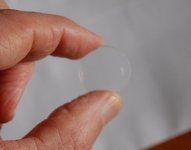brocknroller
porromaniac

It is pretty funny how the mostly imaginary Conquest HD is so badly out-buzzing the similar Trinovid neu. The Zeiss may be better, who knows, but we seem to have been taken in by the magical phrases ED, Lotutec, and a more detailed first impression. If you still get what you pay for, the Leica should be better, being roughly $1300 vs the Conquest's $900. In my little bit of experience, it seems that Zeiss wins on technology, but Leica on old fashioned precision setting of the optics. Zeiss is killer bright and clear, Leica killer sharp. This is going to be fun, and it's not over yet.
Ron
Not necessarily ED glass, Ron, the magical phrase with the new Zeiss "HD" glass is "a brand new high quality Schott glass." No mere mortal knows what it is, and Wizards of Absam and their cohorts aren't saying.
My eyes ain't what they used to be, I need killer bright and clear AND killer sharp. IOW, a porro!
Brock




